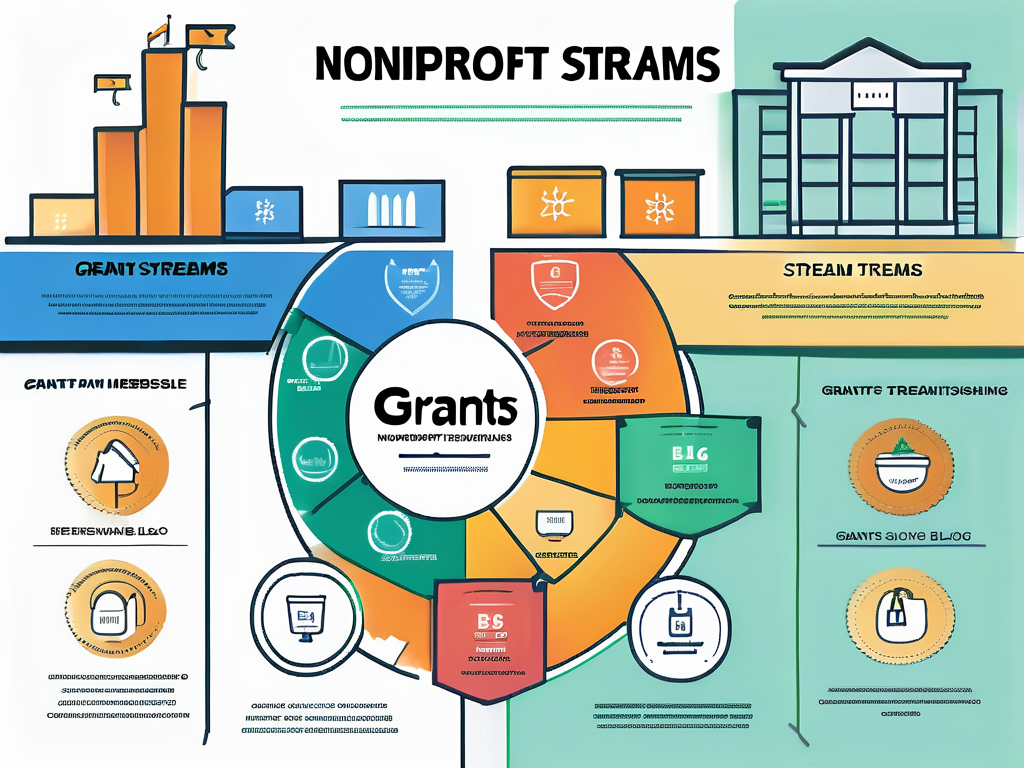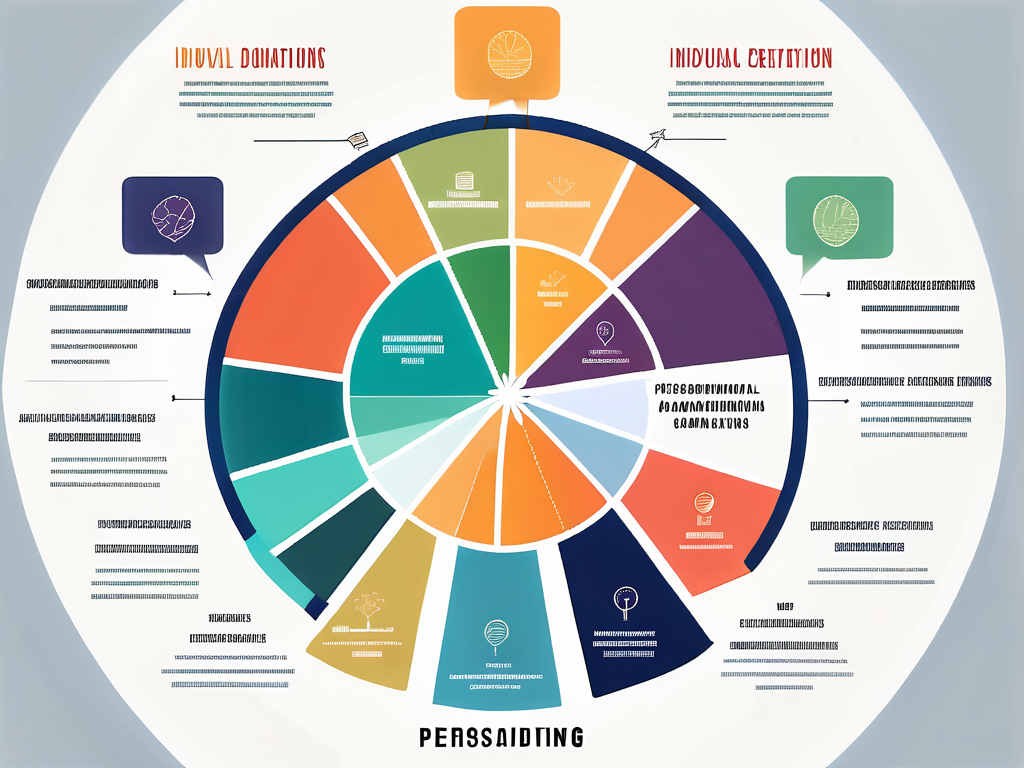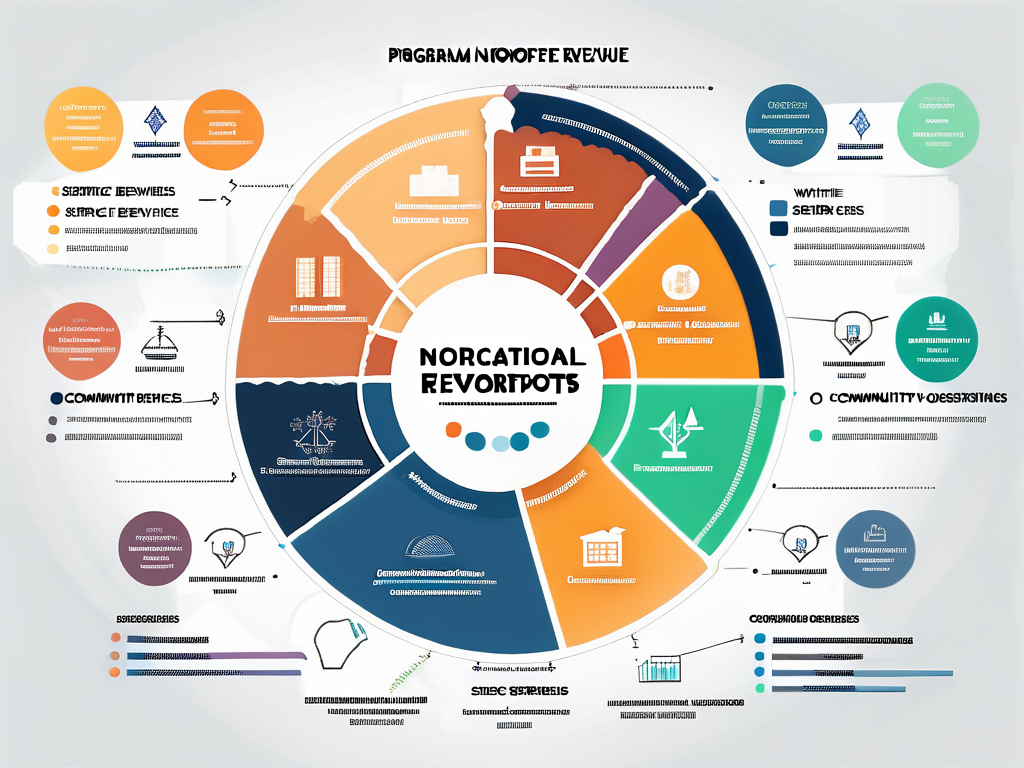Top Sources of Revenue for Nonprofits: A Comprehensive Guide

Nonprofit organizations play a crucial role in society by addressing various issues ranging from social welfare to environmental sustainability. However, to sustain their operations and fulfill their missions, nonprofits must effectively generate revenue. This comprehensive guide explores the top sources of revenue for nonprofits, examining diverse strategies that can lead to financial stability and growth.
Understanding Nonprofit Revenue Streams
Defining Nonprofit Revenue
Nonprofit revenue refers to the funds that an organization receives to support its mission. Unlike for-profit businesses, nonprofits cannot distribute profits to shareholders; all income must be reinvested into the organization’s programs and services. Understanding the various sources of revenue is essential for nonprofits to thrive.
Revenue sources for nonprofits can be categorized into several types, including individual donations, grants, corporate sponsorships, and service fees. Each source comes with its own set of challenges and opportunities, influencing how nonprofits strategize for success. For instance, individual donations often rely on the ability of the organization to connect with its supporters on a personal level, fostering a sense of community and shared purpose. In contrast, grants may require extensive proposal writing and compliance with specific regulations, demanding a different set of skills and resources.
Importance of Diversified Revenue Sources
Diversifying revenue streams is crucial for the sustainability of nonprofit organizations. Relying on a single source of income can be risky, especially during economic downturns or shifts in funding priorities. By embracing a mix of revenue sources, nonprofits can mitigate risks and remain resilient.
A diversified approach not only enhances financial stability but also expands the organization’s reach and impact. For example, combining individual donations with corporate sponsorships can create a robust funding base that supports various initiatives and programs. Additionally, exploring earned income strategies, such as selling merchandise or offering fee-based services, can further bolster revenue. This not only provides financial support but also raises awareness about the organization’s mission, engaging a broader audience in its cause. Moreover, as nonprofits navigate the complexities of funding, they often find that building relationships with their donors and stakeholders becomes just as important as the money itself, fostering a community that is invested in the organization’s success.
Individual Donations and Fundraising
The Power of Individual Donations
Individual donations are often a primary revenue source for many nonprofits. These contributions can come from a variety of donors, including individuals, families, and community members. Engaging with donors and building relationships is key to maximizing this revenue stream.
To harness the power of individual donations, nonprofits should focus on storytelling and transparency. By clearly communicating their mission and demonstrating the impact of donations, organizations can inspire individuals to give generously. For instance, sharing personal stories from beneficiaries can create an emotional connection, allowing potential donors to see the tangible effects of their contributions. This approach not only fosters trust but also encourages repeat donations, as donors feel more invested in the cause.
Effective Fundraising Strategies
Fundraising is an art that requires careful planning and execution. Nonprofits should employ a mix of strategies to reach potential donors, such as:
- Campaigns and Events: Hosting events like galas, auctions, and fun runs can create buzz and attract donors.
- Online Fundraising: Utilizing social media and crowdfunding platforms can broaden the reach to potential donors.
- Membership Programs: Offering memberships with exclusive benefits can encourage loyal support.
- Peer-to-Peer Fundraising: Engaging supporters to raise funds on behalf of the organization can exponentially increase donations.
Implementing a well-rounded fundraising strategy can significantly increase donations and broaden a nonprofit’s supporter base. Additionally, leveraging data analytics can enhance these efforts by helping organizations identify donor trends and preferences. By analyzing past donation patterns, nonprofits can tailor their outreach and engagement strategies, ensuring that their messaging resonates with different segments of their audience. This data-driven approach not only improves the effectiveness of fundraising campaigns but also helps in cultivating long-term relationships with donors, ultimately leading to sustained support for the organization’s mission.
Corporate Sponsorships and Partnerships
Securing Corporate Sponsorships
Corporate sponsorships offer nonprofits an opportunity to partner with businesses for mutual benefit. Companies often seek to enhance their corporate social responsibility (CSR) initiatives, making them more inclined to sponsor nonprofit activities and events. This symbiotic relationship not only boosts the visibility of the nonprofit but also allows corporations to showcase their commitment to social causes, which can enhance their brand image and customer loyalty.
To secure corporate sponsorships, nonprofits should identify companies whose values align with their mission. Developing a compelling proposal that outlines the benefits of the partnership for the corporation can be an effective way to initiate collaboration. Packages can include brand visibility at events, acknowledgment in promotional materials, and more. Additionally, nonprofits can leverage social media and digital marketing strategies to highlight the partnership’s success, showcasing the positive impact of the sponsorship on the community and the corporation’s brand. This not only attracts potential sponsors but also creates a narrative that resonates with the audience, emphasizing the importance of corporate involvement in social initiatives.
Building Long-Term Partnerships
While securing corporate sponsorships is essential, building long-term partnerships is even more valuable. Long-term partnerships can provide ongoing support and stability. To foster these relationships, nonprofits should focus on maintaining open communication and regularly update sponsors on the impact of their contributions. Providing detailed reports that highlight metrics such as community engagement, funds raised, and success stories can reinforce the value of the partnership and encourage continued support.
It’s also beneficial to involve corporate sponsors in volunteer opportunities, as this can strengthen relationships and deepen the sponsor’s connection to the nonprofit’s mission. By allowing sponsors to participate in hands-on activities, nonprofits can create memorable experiences that foster loyalty and enthusiasm. Successful partnerships thrive on shared value and mutual respect, and when sponsors see firsthand the difference their contributions make, it can lead to increased investment and advocacy for the nonprofit’s cause. Furthermore, celebrating milestones together, such as anniversaries or significant achievements, can solidify the partnership and encourage a shared vision for future endeavors.
Government Grants and Contracts
Navigating Government Grants
Government grants are another vital source of revenue for many nonprofits. These funds can be used for specific programs or general operational support. However, the process of obtaining grants can be competitive and complex.
To successfully navigate government grants, nonprofits should understand the eligibility requirements and application processes. Researching grant opportunities that align with the organization’s mission is essential. Preparing a compelling grant proposal and clearly demonstrating how funds will be used can significantly enhance the chances of securing funding. Additionally, nonprofits should consider forming partnerships with other organizations or stakeholders, as collaborative proposals can often present a stronger case for funding. Engaging in community outreach to gather support and input can also provide valuable insights that strengthen the proposal.
Furthermore, keeping abreast of changes in government policies and funding priorities is crucial. Many government agencies publish their funding strategies and areas of focus, which can shift based on political climates or emerging social issues. By staying informed, nonprofits can better position themselves to apply for grants that are more likely to be funded. Attending workshops or webinars on grant writing and management can also provide essential skills and networking opportunities that may lead to successful funding outcomes.
Understanding Government Contracts
In addition to grants, nonprofits may also engage in government contracts to provide services or programs. These contracts can lead to substantial revenue but require organizations to meet specific deliverables and reporting requirements.
To pursue government contracts, nonprofits should develop a strong proposal that highlights their experience, capacity, and success in delivering similar services. Maintaining compliance with all contractual obligations is essential to ensure continued funding and the possibility of future contracts. It is also beneficial for nonprofits to establish a clear understanding of the evaluation criteria used by government agencies when awarding contracts. This knowledge can help tailor proposals to meet the specific needs and expectations of the funders.
Moreover, nonprofits should consider investing in capacity-building efforts to enhance their ability to fulfill contract requirements. This may include training staff, improving operational infrastructure, or adopting new technologies that streamline service delivery. Building a solid reputation through successful contract execution can lead to repeat business and referrals, further solidifying the organization’s role as a trusted service provider within the community. Networking with other organizations that have experience in government contracting can also provide valuable insights and strategies for success in this competitive arena.
Program Service Revenue
Generating Revenue from Services
Many nonprofits offer services or products that generate revenue, commonly referred to as program service revenue. This can include consulting, education, or direct services that align with the nonprofit’s mission.
Charging fees for these services can supplement funding while simultaneously promoting the organization’s mission. A careful balance is needed, however, to ensure that fees do not limit accessibility for those in need.
Pricing Strategies for Nonprofit Services
Establishing effective pricing strategies is critical to maximizing program service revenue. Nonprofits should consider factors such as community needs, target audience, and operational costs when setting fees.
- Sliding Scale Fees: Offering a sliding scale based on income can ensure accessibility and attract a wider audience.
- Membership Discounts: Providing discounts to members can encourage engagement while generating revenue.
- Bundled Services: Offering bundled services at a reduced rate can incentivize purchases and promote multiple programs.
By implementing strategic pricing, nonprofits can enhance their program service revenue, ultimately fostering sustainability and growth.
In conclusion, understanding and diversifying revenue streams is essential for the success of nonprofit organizations. By effectively harnessing individual donations, corporate sponsorships, government grants, and program service revenue, nonprofits can create a more sustainable future and increase their impact on the communities they serve.
As you explore the diverse revenue streams that can empower your nonprofit’s growth and impact, remember that a strong digital presence is crucial in today’s connected world. BlueWing, with our expertise in paid media management for nonprofits, stands ready to elevate your organization’s online visibility. We specialize in maximizing the benefits of paid social media and search, including the Google Ad Grants program, to ensure your message resonates far and wide. Let us help you build a sustainable growth engine with our comprehensive approach and weekly updates that keep you informed every step of the way. With over 8 years of experience surpassing M+R industry benchmarks, we’re poised to amplify your impact. Contact us today to learn how we can support your mission.





